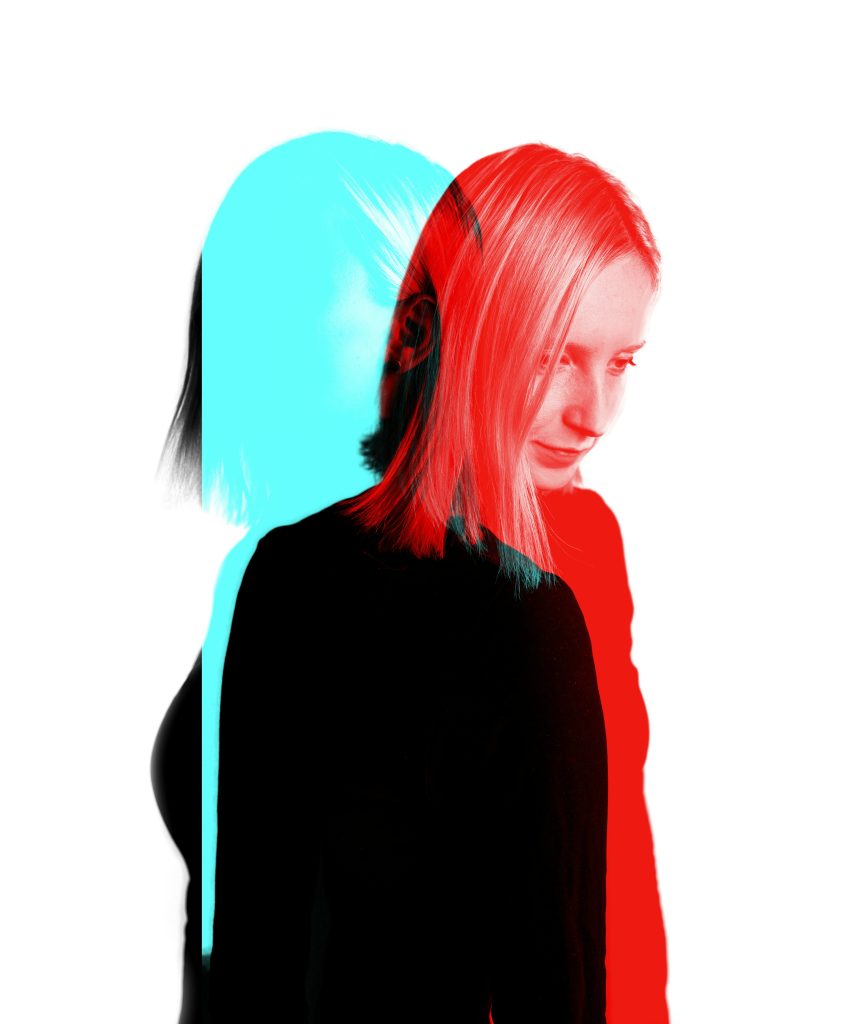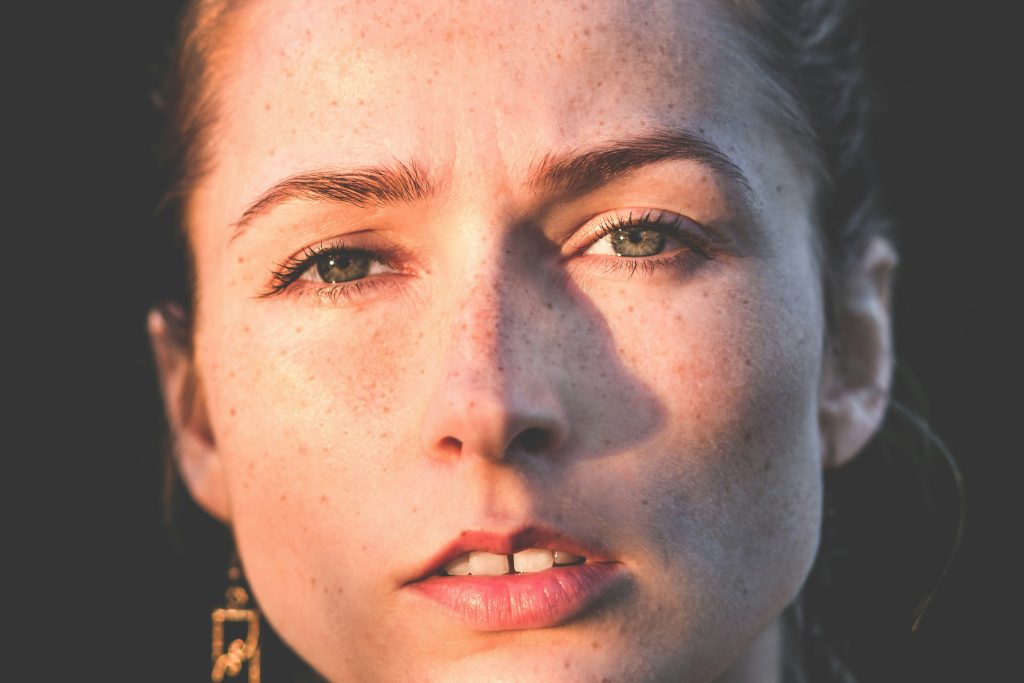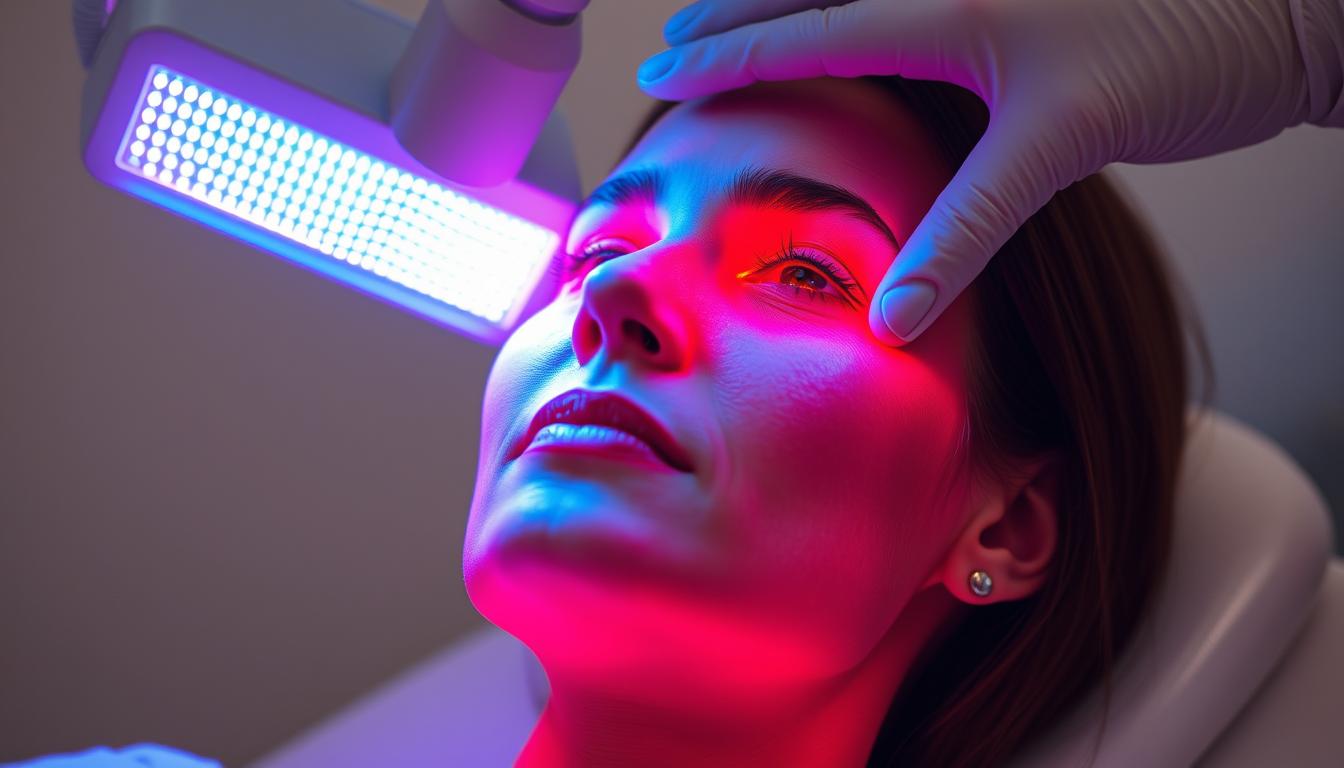Red light therapy has emerged as a promising non-invasive treatment for various facial skin concerns. This technology uses specific wavelengths of red and near-infrared light to penetrate skin cells, stimulating natural cellular processes and potentially improving skin health from within. But does the science support the growing popularity of these devices for home use?
As an independent researcher in this field, I’ve analyzed the clinical evidence and tested leading devices to help you understand what red light therapy can realistically do for your facial skin—and which home devices deliver the best results for specific concerns like acne, aging, and overall skin health.
What Is Red Light Therapy and How Does It Work?
Red light therapy uses specific wavelengths that can penetrate the skin to stimulate cellular activity
Red light therapy (RLT), also called photobiomodulation or low-level light therapy, uses LED lights to emit red and near-infrared wavelengths between 630-850 nanometers. Unlike UV light, these wavelengths don’t damage skin cells but instead penetrate to different skin depths to stimulate cellular energy production.
The science behind RLT involves cellular mitochondria absorbing these light wavelengths, which increases production of adenosine triphosphate (ATP)—the energy currency of cells. This boost in cellular energy can accelerate healing, reduce inflammation, and stimulate collagen production (Avci et al., 2013).
Different wavelengths target different skin depths and concerns:
- 630-633nm: Targets surface skin issues like acne and inflammation
- 660nm: Penetrates deeper for collagen stimulation and anti-aging
- 810-830nm: Reaches deeper tissues for enhanced healing and inflammation reduction
- 850nm: Penetrates deepest for circulation improvement and cellular repair
This targeted approach explains why quality devices often include multiple wavelengths rather than a single spectrum—each addresses different skin concerns simultaneously.
Evidence-Based Benefits of Red Light Therapy for Face
Clinical studies show improvements in skin texture and wrinkle reduction after consistent red light therapy treatments
Research has demonstrated several evidence-based benefits of red light therapy for facial skin concerns. Here’s what the clinical studies tell us:
Acne Reduction
Red light therapy has shown promising results for acne treatment. A clinical study by Lee et al. (2020) found that participants experienced a 63% reduction in inflammatory acne lesions after 8 weeks of consistent red light therapy treatments. The therapy works by reducing inflammation and targeting acne-causing bacteria without harsh side effects common with topical treatments.
Anti-Aging and Wrinkle Reduction
Perhaps the most sought-after benefit, red light therapy has been clinically shown to improve signs of aging. Research by Wunsch and Matuschka (2014) demonstrated that participants receiving red light therapy experienced significant improvements in skin complexion, feeling, and collagen density.
The study found a 40% increase in collagen production when using 830nm wavelength light, which directly contributes to smoother skin texture and reduced appearance of fine lines. Participants reported visible improvements after 4-6 weeks of consistent use.
Improved Skin Tone and Texture
Beyond wrinkle reduction, red light therapy can improve overall skin tone and texture. A study by Barolet et al. (2016) found that participants showed significant improvements in skin roughness and density after regular treatments, with 87% of subjects reporting satisfaction with their results.
Reduced Inflammation and Redness
For those with sensitive skin or conditions like rosacea, red light therapy’s anti-inflammatory properties can provide relief. Research shows it can calm irritated skin and reduce persistent redness by modulating inflammatory pathways in the skin (Hamblin, 2017).
“The clinical evidence supporting red light therapy for skin rejuvenation is substantial. What makes it particularly appealing is the absence of downtime and side effects compared to more invasive procedures.”
Comparing Top Red Light Therapy Devices for Face
The Total Spectrum Mini provides targeted facial treatment in a compact, desk-friendly design
When selecting a red light therapy device for facial treatments, several factors determine effectiveness: wavelength diversity, power output (irradiance), treatment area coverage, and safety features. Here’s how the leading options compare:
Key Features to Consider
- Wavelength range: Multiple clinically validated wavelengths provide comprehensive treatment
- Power output: Higher irradiance (mW/cm²) means shorter effective treatment times
- Treatment area: Larger panels treat more area simultaneously but sacrifice portability
- EMF levels: Lower electromagnetic field emissions are preferable for safety
- Flicker rate: Lower flicker percentages reduce eye strain and potential headaches
Top Devices for Facial Treatments
RLT Home Total Spectrum Mini
Best for: Targeted facial treatments and portability
The Total Spectrum Mini (12″×12″, 72 LEDs) offers seven clinically validated wavelengths including 630nm, 660nm, and 830nm—ideal for comprehensive facial treatment. Its compact size makes it perfect for desk placement and focused facial therapy.
What sets it apart is the zero measurable EMF at treatment distance and pre-built modes specifically for skin and anti-aging concerns. The 60-day trial period provides ample time to evaluate results.
PlatinumLED BioMax
Best for: High irradiance treatments
PlatinumLED’s BioMax series stands out for its exceptional irradiance levels, delivering more power per session. This translates to potentially shorter treatment times while maintaining effectiveness.
The panels offer five wavelengths and are well-regarded for their build quality, though they typically come at a higher price point than comparable options.
Mito Red Light
Best for: Budget-conscious beginners
Mito offers more affordable entry-level panels that still deliver effective results. Their devices typically feature dual wavelengths (660nm and 850nm) which cover the basics for skin rejuvenation.
While they don’t offer the wavelength diversity of premium options, they provide a solid introduction to red light therapy at a more accessible price point.
Find Your Ideal Red Light Therapy Device
Not sure which panel is right for your skin concerns? Compare leading red light therapy panels side-by-side to find the perfect match for your needs and budget.
How to Use Red Light Therapy for Maximum Facial Benefits

Maintaining proper distance and using eye protection ensures safe and effective treatment
To maximize the benefits of red light therapy for your face, follow these evidence-based guidelines:
Treatment Protocol
- Cleanse your face thoroughly before treatment to remove makeup, sunscreen, and skincare products that might block light penetration.
- Position yourself 6-12 inches from the device (follow manufacturer’s specific recommendations).
- Use eye protection if recommended by the device manufacturer, especially for higher-powered units.
- Start with 3-5 minute sessions and gradually increase to 10-20 minutes as your skin adapts.
- Maintain a consistent schedule of 3-5 treatments per week for optimal results.
When to Expect Results
Patience is key with red light therapy. Based on clinical studies:
- Acne improvement: First results often appear within 2-4 weeks
- Skin texture and tone: Noticeable changes typically begin at 4-6 weeks
- Wrinkle reduction: Most significant results appear after 8-12 weeks of consistent use
Pro Tip: For enhanced results, consider using the RLT Home Total Spectrum Compact (30″×12″, 216 LEDs) which provides coverage for both face and neck simultaneously. Its seven-wavelength mix is particularly effective for comprehensive anti-aging treatment.
Combining with Skincare
Research suggests that certain skincare ingredients can enhance red light therapy results:
- Apply hyaluronic acid serums after treatment to maximize hydration
- Use vitamin C products in the morning following evening red light sessions
- Avoid retinol products immediately before treatment as they can increase photosensitivity
- Always apply sunscreen during daytime hours, as red light therapy doesn’t provide UV protection
Safety Considerations and Precautions
Understanding proper safety protocols ensures effective and risk-free treatments
While red light therapy is generally considered safe, it’s important to follow these precautions:
Who Should Exercise Caution
- People with photosensitizing medications should consult a doctor first
- Those with a history of skin cancer should get medical clearance
- Individuals with epilepsy may need to avoid devices with pulsing features
- People with darker skin tones should start with shorter sessions to assess sensitivity
Potential Side Effects
- Temporary mild redness that typically subsides within hours
- Slight eye strain if proper protection isn’t used
- Mild headache in sensitive individuals (often related to flicker rate)
- Temporary dryness if overused without proper hydration
Important: Always choose FDA-cleared devices for home use. The FDA clearance indicates the device is considered safe when used as directed, though it doesn’t necessarily guarantee effectiveness for all users.
A key safety advantage of premium devices like the RLT Home series is their zero measurable EMF at treatment distance (≥10 cm) and minimal flicker rate (
Frequently Asked Questions About Red Light Therapy for Face
How often should I use red light therapy on my face?
For optimal results, most clinical studies recommend 3-5 sessions per week, each lasting 10-20 minutes. Consistency is more important than frequency—regular treatments several times weekly typically yield better results than daily short sessions.
Can red light therapy damage my skin or eyes?
Unlike UV light, red light therapy doesn’t damage skin cells or cause cancer. However, the brightness can potentially cause eye strain, so following manufacturer guidelines regarding eye protection is recommended, especially with higher-powered devices.
Will red light therapy help with my acne scars?
Research shows red light therapy can improve the appearance of acne scars by stimulating collagen production and cellular regeneration. A study by Barolet (2018) found that 85% of participants showed improvement in acne scar appearance after 12 weeks of consistent treatment.
Are at-home devices as effective as professional treatments?
Professional devices typically offer higher power output, potentially delivering faster results. However, high-quality home devices used consistently can achieve comparable results over time. The advantage of home devices is the ability to maintain a consistent treatment schedule without the cost and inconvenience of regular clinic visits.
Can I use skincare products before or after red light therapy?
For maximum light penetration, use red light therapy on clean, dry skin. Apply serums and moisturizers after your session to enhance absorption. Avoid products containing ingredients that increase photosensitivity (like retinol) immediately before treatment.
Conclusion: Is Red Light Therapy Worth It for Your Face?

Consistent red light therapy can lead to noticeable improvements in skin health and appearance
The evidence supporting red light therapy for facial skin concerns is compelling. Clinical studies consistently demonstrate benefits for acne reduction, anti-aging, improved skin tone, and reduced inflammation when used properly and consistently.
For those considering an investment in a home device, the research suggests that quality matters—particularly regarding wavelength diversity, power output, and safety features. While budget options can provide benefits, devices with multiple clinically validated wavelengths like the RLT Home Total Spectrum series offer more comprehensive treatment for various skin concerns simultaneously.
The key to success with any red light therapy regimen is consistency and patience. Most participants in clinical studies began seeing noticeable improvements after 4-8 weeks of regular use, with results continuing to improve over 12 weeks and beyond.
Ready to Experience the Benefits of Red Light Therapy?
Find the perfect red light therapy device for your specific skin concerns. Compare leading panels side-by-side to make an informed decision based on features, coverage area, and value.
— David, independent RLT researcher

